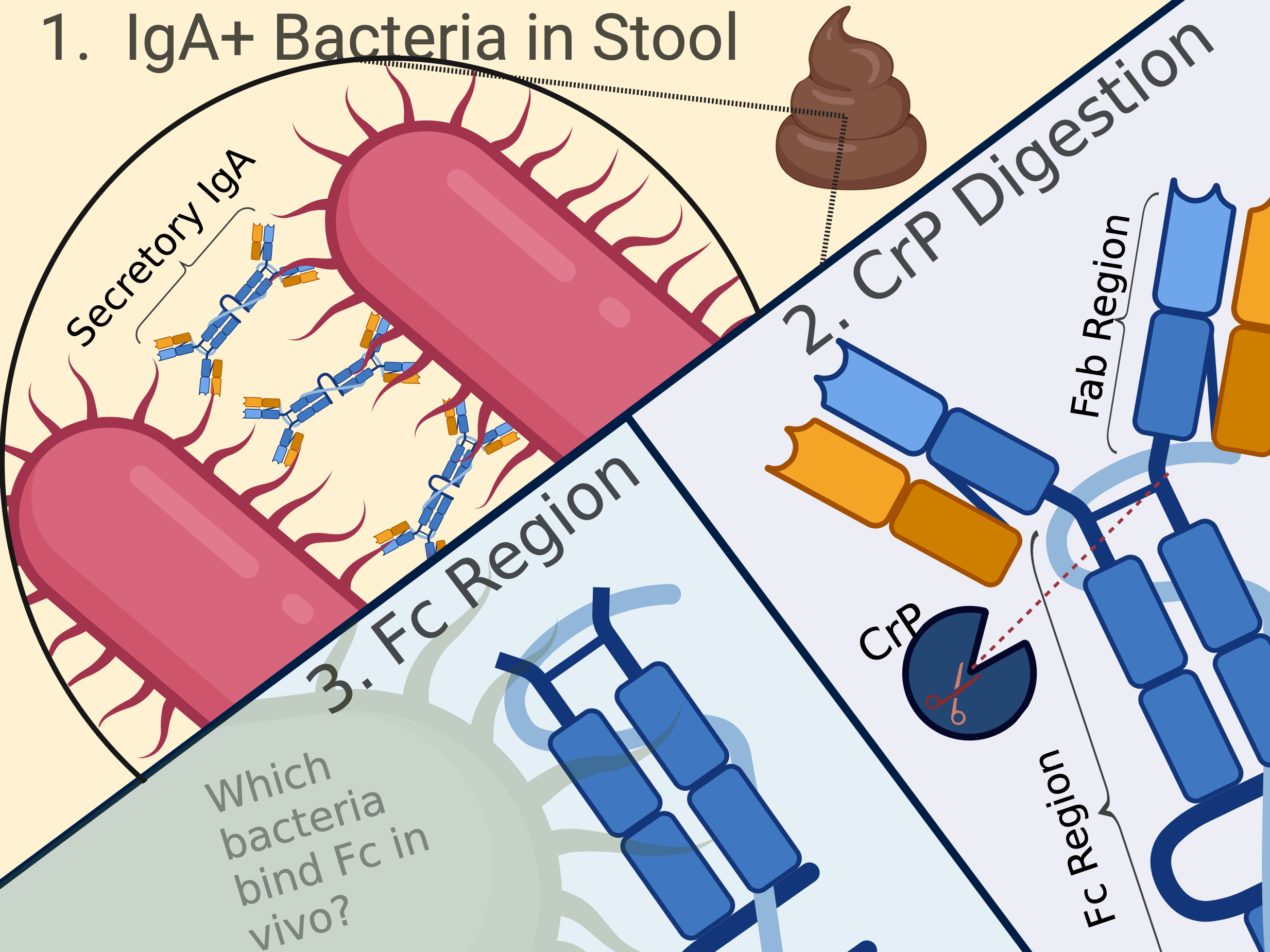Using enzymatic digests to investigate IgA-microbiome interactions

Secretory IgA is the most-secreted human antibody, with a normal person secreting several grams per day into the gut. Like most antibodies, it has Fab regions (the parts that stick to a target) and Fc regions (the parts that don’t normally stick to a target). Unlike serum antibodies, it does not trigger responses from immune cells; instead, being double ended, it chains together bacteria with similar surface antigens (the “targets”) into clumps, which keeps them sequestered in the mucus where they can be cleared. Some bacteria, for instance the well-known commensal genus Bifidobacterium, are mucus-seeking and actually appear to reproduce better when there is more IgA targeted against them. So, given that sIgA can be a competitive advantage for certain bacteria, do any seek out its Fc region?